Photos of the Pika, North America's Cutest Mammal
Cutie pie

The Rocky Mountains of western North America are a vast region of diverse biomes that run from the extreme northern lands of British Columbia, Canada, to the southern boundary of New Mexico. The U.S. Geological Survey (USGS) identifies 10 distinct forested zones throughout the Rocky Mountains whose highest mountain peaks rise to elevations of over 14,000 feet (4,300 meters). And atop those many high peaks, at an elevation at or just above the timberline in areas of talus and loose rock, lives what some contend is the continent's cutest mammal — the American pika.
One of many

The American pika, Ochotona princeps, is one of 29 species of pika found around the world. All pika are close relatives of rabbits and hares as they all belong to the same order Lagomorpha. The genus name Ochotona comes from the Mongolian name for the pika, ochodona and princeps is Latin for "chief." It was the Chipewyan Indians, a group of the original inhabitants of northern Canada, whose name for the pika translate to mean "little chief hare." Pikas have many common names some of which are rock rabbit, mouse hare, whistling hare and cony.
Resembling another

The American pika, as seen here, may look more closely related to a hamster or a guinea pig instead of their rabbit/hare cousins. Their oval-shaped bodies grow to just 6-8 inches (15-20 centimeters) long, and an adult pika may weigh only 7 ounces (198 grams). Pika are herbivorous mammals with thick, light brown fur, rounded ears and no visible tail. Unlike their relatives the rabbit and hare, pika's hind legs are no longer than their forelimbs. Their feet, including the soles, are covered with dense fur. Pika are the smallest member of the order Lagomorpha.
Great senses
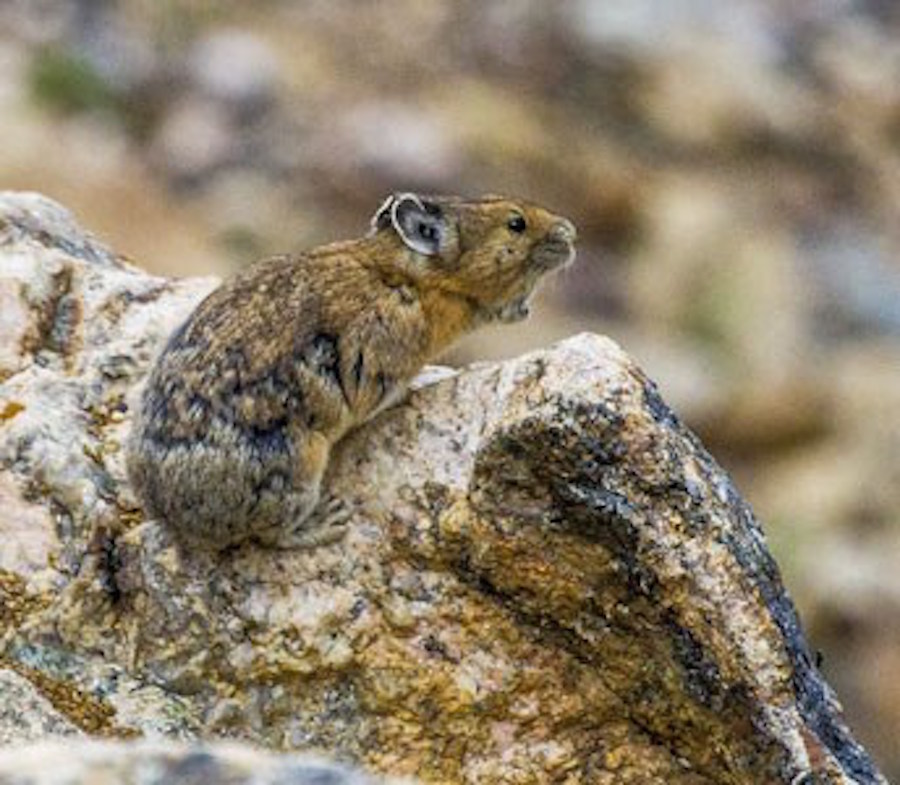
Pika have excellent hearing and vision. Their sharp claws and fur-covered feet allow them to quickly move across the broken alpine rocks. They are also very vocal animals. When frightened, they will scream a high-pitched "eek" to warn others of danger. They will also produce a variety of calls and songs to protect their home territory and to communicate with other local pika.
Rocky home
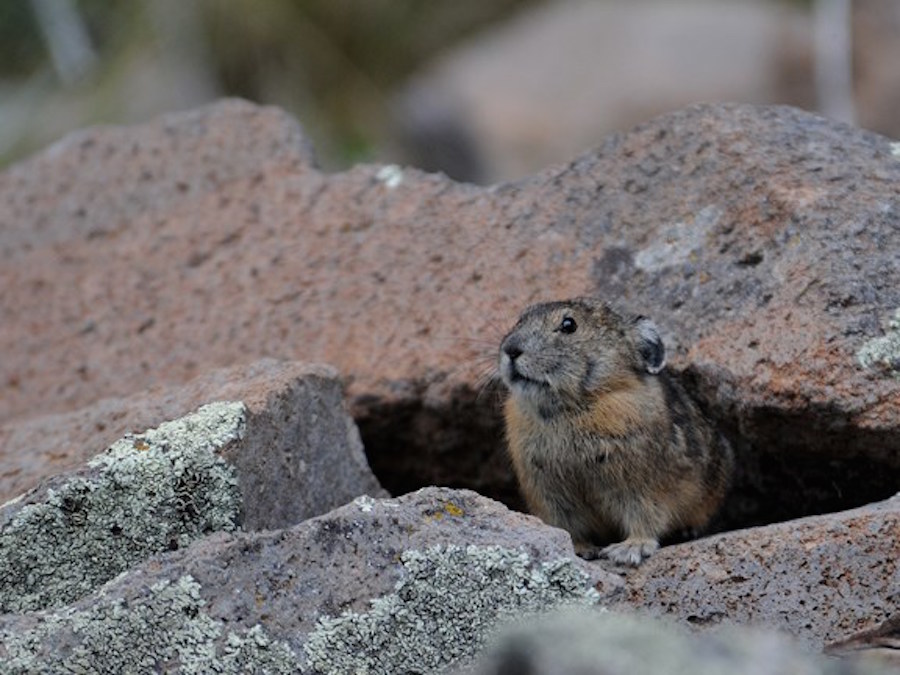
North American pikas live primarily in and among the rocky talus at or above the timberline of the highest peaks of the Rocky Mountains. Their nests are found in the deep crevasses and holes among the talus and close to an alpine meadow or other suitable vegetation.
Scientists further break the American pika into 36 subspecies based on their population structure and geography. They can be found throughout the Sierra Nevada Mountains of California, the Cascade Mountains of Oregon and Washington, and throughout the Rocky Mountains from southern New Mexico to British Columbia.
Tough cookies
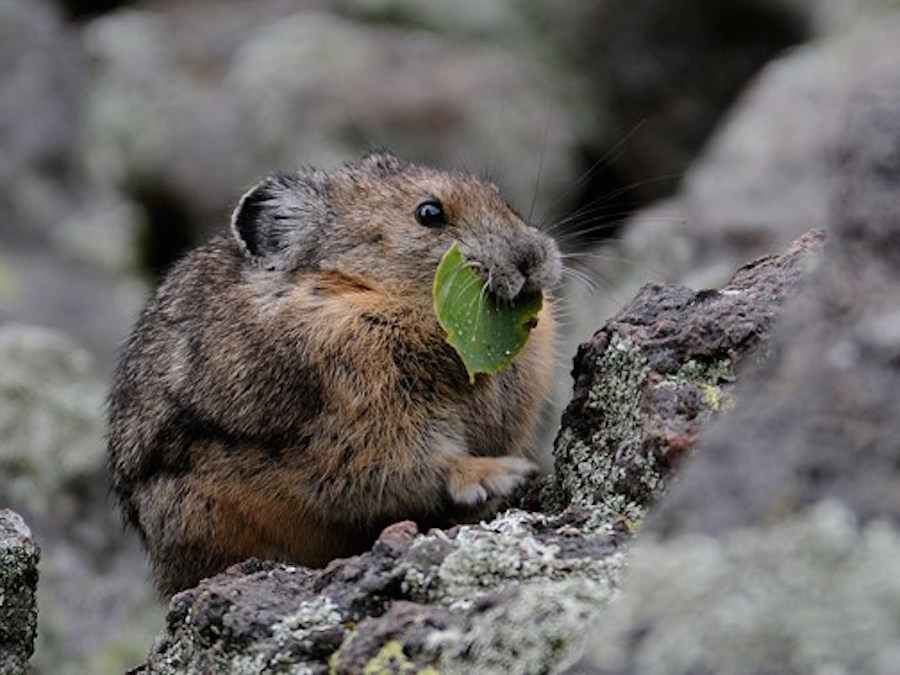
Pikas don't hibernate, nor do they migrate. They spend the short summer months of the highest mountains gathering vegetation to sustain them through the long, harsh winters. Scientists who study the pika contend that a single pika may make upward of 14,000 foraging trips during the summer months and as many as 25 such trips each hour to obtain food for their stack of winter food. To sustain their strength for such feverish activity, a pika may eat as many as nine times each day.
Get the world’s most fascinating discoveries delivered straight to your inbox.
Friends and family

Pikas seem to have a varying degree of social interaction. Those pikas that tend to make their home territory amongst the rocks and talus seem more asocial, marking and defending their widely spaced territories. They let other pikas know their presence with a variety of vocal sounds. When they come upon a neighbor, an aggressive "get out of my territory chase" usually begins.
Species of burrowing pikas tend to live in family groups where the group interacts and defends their common territory. Within the family group, these social pikas groom each other and often sit side-by-side and even rub noses.
Courting in season

Each spring pikas, form a new mating pair. Males court their chosen females with a series of songs. Breeding begins in late May while snow still covers the ground. Gestation lasts for about 30 days, resulting in a litter of two to six pups.
Pups are born helpless, hairless and blind, only opening their eyes some nine days after birth. Female pikas raise their young on their own. At 4 weeks, the young pika leave their nest and begin to forage for themselves. Females usually have two litters of pups each summer.
Specific diet
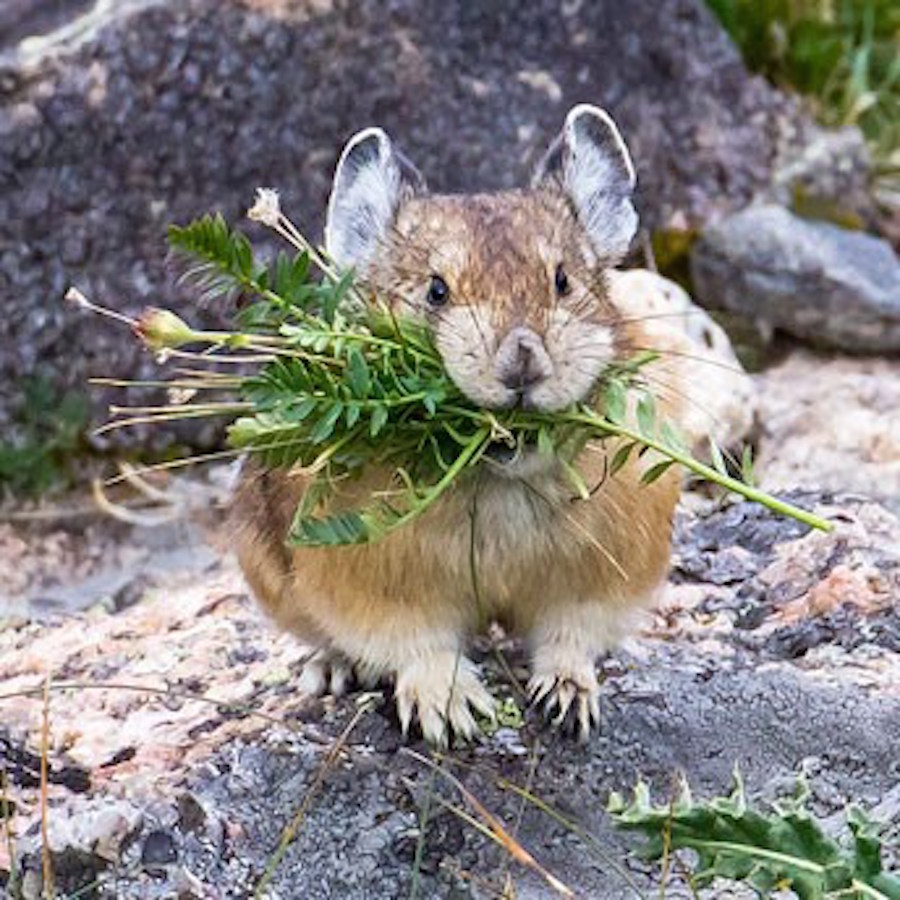
Pikas are herbivores and obtain most of the water they need from the plants they consume. Even though their homes are on the highest mountaintops, pikas don't hibernate during the cold and snowy winters. Instead they collect and store different plants over the summer when the nutritional value of the plants is at its highest. They spread their collected treasure over the rocks to dry in the sunshine. Once dry, they gather, stack their precious vegetation into a series of "haystacks," which they hide under the many rocks and boulders.
Chewers' galore
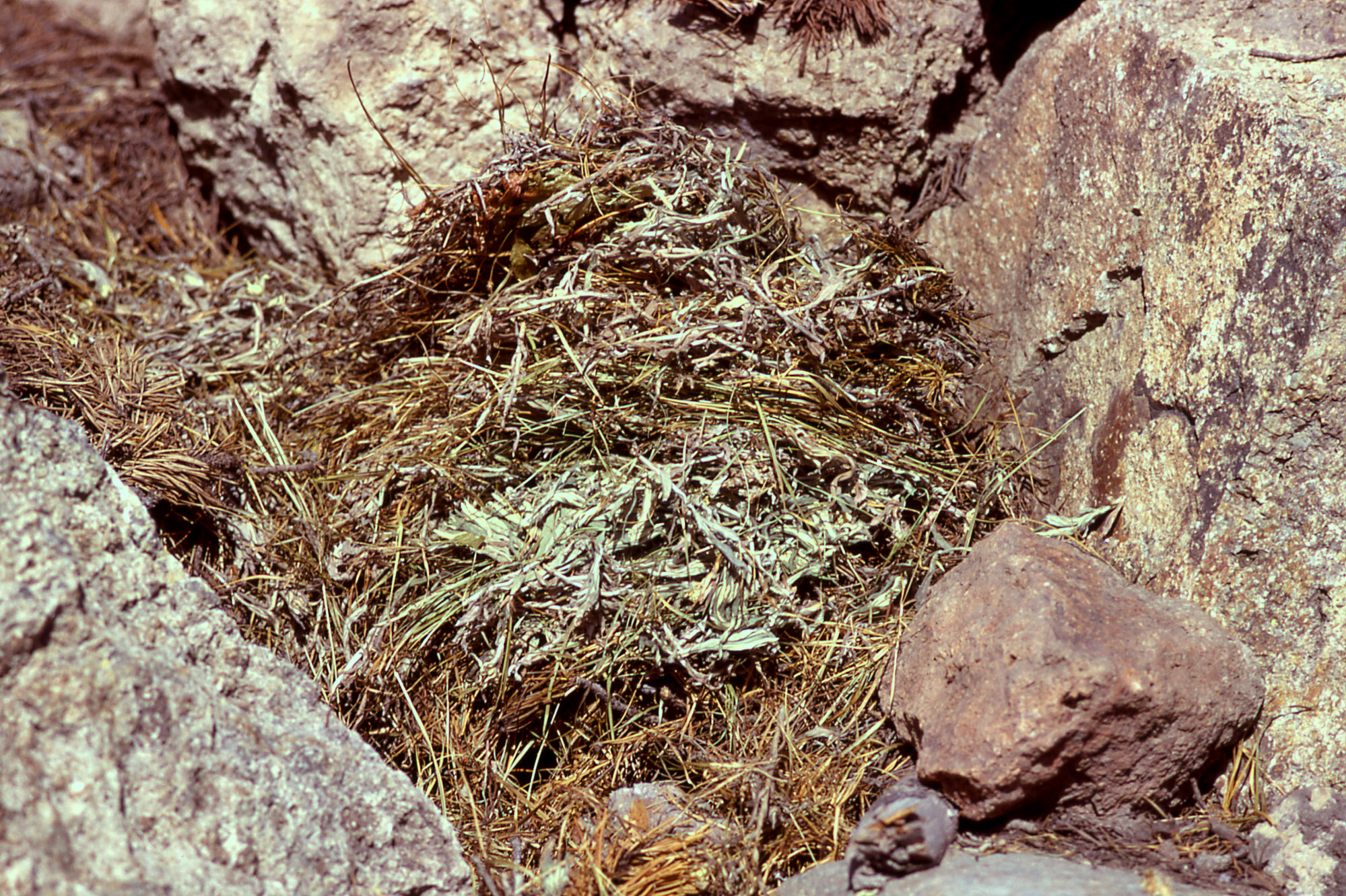
Pika use their sharp, chisel-like teeth to cut the many species of plants found in the mountain meadows. Grasses, forbs and shrubs make up about 90% of a pika's diet. They also eat woody bark, conifer needles, sedges, lichen and clovers. Biologists have discovered that a pika's haystack, shown here, can weigh up to 60 pounds (27 kilograms). Their haystacks are hidden within their territory and may reach 2 feet (.6 m) high and contain over 30 different species of plant.
Biologists also discovered that pika will place plants with a high concentration of toxic chemicals within their haystacks to help preserve the edible vegetation throughout the long winter months. Pika even consume there toxic plants at the end of winter after the toxins have broken down.
Sticking to familiar places
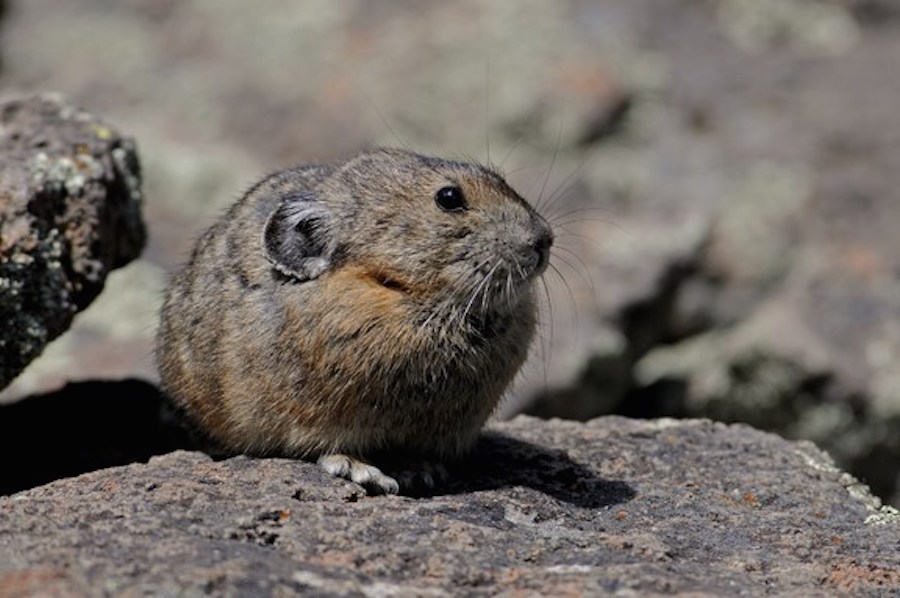
The pika of the Rocky Mountains live out their lives within a few miles or kilometers of where they are born. In the wild, a pika can live up to 7 years if they can avoid the many predators with whom they share their mountaintop homes. Coyotes, martins and weasels share the rugged mountains with the pika and are a daily threat. But danger also comes from the air, as the many species of hawks and eagles find the adorable pika to be a delicious meal.


